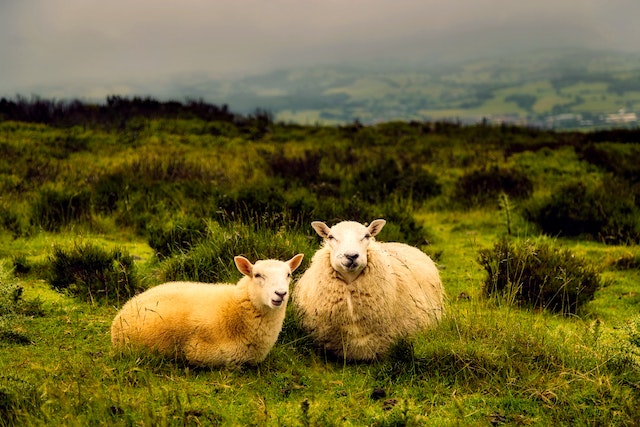
Why can’t all animals be domesticated? There are six criteria needed for an animal to be domesticable.
The first animals were domesticated about 15,000 years ago. Early people were hunter-gatherers, but they transitioned to agriculture about 10,000 years ago and most animals we use today were domesticated after that. The first animals to be domesticated were dogs. They were domesticated about 15,000 years ago and they were used by the hunter-gatherers because of their hunting ability. It was a symbiotic relationship. Cats were domesticated about 12,000 years ago and this coincides with when hunter-gatherers started to gather in settlements. The cats would have kept the dwellings clear of mice. Sheep were domesticated 10,000 years ago. They would have been used for their wool, milk, and meat. Pigs and cattle were domesticated 8,000 years ago. Horses were domesticated 6,000 years ago and llamas 4,500 years ago. Today, we have domesticated about 40 different types of animal. There are 8.7 million species of living creatures in the world. Admittedly, a large number of them are insects, but still, that is a large number of living creatures that we haven’t managed to domesticate. Why is that? Why can some animals be domesticated and some can’t?
Jared Diamond, the author of “Guns, Germs, and Steel” says that there are six criteria that have to met for an animal to be domesticated. And we need to be clear that we are talking about domesticated and not tamed. There is a difference. A tamed animal is one that has been captured and taught to live with people. It has not been domesticated and its offspring will be wild. An example is the zebra carriage owned by Lionel Walter Rothschild. It was pulled by four tame zebras. However, zebras are not domesticated. Domestication involves selectively breeding animals for a certain trait that we find useful. Cows have been bred to produce more milk. Dogs have been bred to understand our facial expressions.
The first criterion is that animals cannot be picky eaters. They need to eat the food we have, the food we give them, or the food we throw out. We feed our animals now, but in the early days of domestication a lot of animals had to find their own food around human settlements. Dogs would eat the food we threw out. Cats would eat the rats that food attracted. Sheep and cows could eat the grass.
The second is that the animals need to reach maturity quickly. We have domesticated all of the animals because we have a job for them to do. We need cows to produce milk, cats to catch rats, and horses to pull and carry stuff. If those animals couldn’t perform the tasks until they were older, we wouldn’t be able to use them and we wouldn’t have domesticated them. An example is the elephant. It takes an elephant 15 years before it is old enough for us to use it to carry things. That is too long to wait and is the reason why elephants have never been domesticated.
The third criterion is that domesticated animals have to be able to breed in captivity. We need the animals we use to reproduce themselves. A lot of wild animals need a lot of space or have very complex courting rituals. For example, antelope are very territorial when they are breeding and cheetahs have elaborate courting rituals.
The fourth is that the animals need to be docile. Cows are easygoing, the American bison is unpredictable and dangerous. Cows have been domesticated and American bison haven’t. We have selectively bred docility into dogs, while wolves are naturally aggressive. Zebra are much more aggressive than horses, which is why they haven’t been domesticated.
The fifth criterion is that the animals need not be easily frightened. Deer are easily scared and run away, so they haven’t been domesticated. Sheep are easily scared, but they flock together rather than running away, so they have been domesticated. Gazelle, as another example, are not only easily spooked, they can jump over pretty much any fence we can make.
The sixth and last criterion is that the animals need to conform to a social hierarchy. Dogs are pack animals and it is easy for us to be the leader and make them do what we want. The same is true with horses and all of the other animals we have domesticated. Interestingly, this is the only criterion that doesn’t apply to cats. Cats don’t have a social hierarchy. They are generally solitary hunters, but they do recognize colony members. We give them food, so they live with us. And that is the best we can hope for.
A lot of other animals fulfill some of these criteria, but not all of them, which is why we have only domesticated 40 species. On top of that, most of our animal needs are satisfied by the animals we have currently domesticated. In order to spend the long years domesticating a new animal, we need a reason. And this is what I learned today.
Sources
https://www.bbc.com/news/science-environment-14616161
https://www.frontiersin.org/articles/10.3389/fevo.2020.00103/full
https://www.amnh.org/exhibitions/horse/domesticating-horses/domestication-timeline
https://www.alleycat.org/resources/the-natural-history-of-the-cat/
https://www.ed.ac.uk/sites/default/files/atoms/files/1._understanding_feline_social_structure.pdf
https://www.nationalgeographic.com/animals/article/domesticated-animals
https://www.livescience.com/33870-domesticated-animals-criteria.html
https://wonderopolis.org/wonder/why-cant-every-animal-be-a-pet
